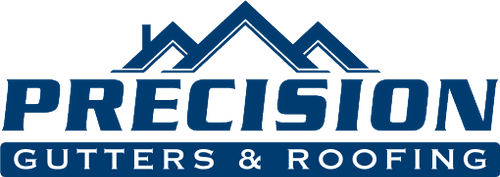Homeownership is something we all appreciate, but it does come with some heavy responsibilities. One of those is taking on the work and expense of necessary maintenance. If you own one home for an extended period, one of the bigger tasks you may have to confront at some point is replacing the roof. Re-roofing represents a significant investment, but a sturdy, well-installed roof protects your home and enhances its value and curb appeal. However, despite its benefits, the costs can seem daunting—unless you take the time to understand the costs involved.
Precision Gutters and Roofing serves Coeur d’Alene, Hayden, Post Falls, Liberty Lake, and other communities in North Idaho and Eastern Washington. We install roofs and gutters on new builds and replace roofs and gutters on existing homes. Because replacing a roof is not something you have to do very often, in our experience, homeowners do not always have a good idea of how much it costs to replace a roof. If you think your roof may be due for replacement in the not-too-distant future, you’ll need to understand costs in order to plan and budget effectively. Read on for a basic breakdown of the expenses involved in getting a new roof.
Factors That Influence Roofing Costs
The cost of a new roof will vary widely depending on several factors. The main issues are:
- Roof Size: Roofing costs are typically calculated per square foot. Large roofs will entail using more materials and labor, increasing the overall cost.
- Material Type: The type of roofing material you choose significantly impacts the price. Options range from more affordable asphalt shingles to premium materials like metal, tile, or slate that carry a heftier price tag.
- Roof Design and Pitch: Complex roof designs or steep pitches can make installation more labor-intensive and costly.
- Location: Local labor rates, material costs, and building codes in your area will also affect the final price.
- Removal and Disposal of the Old Roof: If your old roof must be removed and discarded, this service will add to the overall cost of installation.
- Additional Features: Elements such as skylights, chimneys, and ventilation systems can increase the complexity and expense of a roofing project.
Typical Cost Range for a New Roof
While prices vary depending on the factors mentioned above, here’s a general ballpark of what you can expect to pay for a new roof in the U.S.:
- Asphalt Shingles: $5,000 to $12,000 (average cost for a standard 2,000-square-foot home)
- Metal Roofing: $10,000 to $25,000
- Wood Shakes: $8,000 to $20,000
- Clay or Concrete Tiles: $15,000 to $50,000
- Slate Roofing: $20,000 to $70,000
These prices typically include materials, labor, and basic installation. Additional costs for extras like insulation, custom flashing, or structural repairs may apply.
Breakdown of Roofing Expenses
To better understand where your money is going, here’s a breakdown of the main components of a roofing project and an estimate of how the total costs are allocated:
- Materials (40-60%): Roofing materials include not only the shingles or tiles but also underlayment, flashing, nails, and other materials needed for the job. If the roofing material is expensive (for example, the slate roofing mentioned above), materials costs will absorb a larger proportion of the total roofing costs.
- Labor (30-50%): Skilled labor is a significant portion of the cost, especially for roofs with complex designs or challenging conditions.
- Removal and Disposal (5-15%): If the job involves removal and disposal of your existing roof and accompanying debris, it will add to the overall expense.
- Permits and Inspections (1-5%): Depending on your location, you may need to budget for building permit and inspection fees to ensure compliance with local codes.
- Additional Costs: Sometimes, a roofing job will reveal unexpected issues. If your roof requires structural repairs, new insulation, or upgraded ventilation, these will add to the total cost.
Tips for Managing Roofing Costs
While a new roof is a significant investment, there are ways to manage costs and get the most value for your money:
- Get Multiple Quotes: Obtain estimates from several reputable contractors to compare prices and services, and ask for references from each contractor.
- Choose the Right Material: Consider your budget, climate, and long-term goals when selecting roofing materials. While some roofing products may have higher upfront costs, investing in quality materials can save you money over time with better durability and energy efficiency.
- Plan Ahead: Avoid an emergency roof replacement by keeping up with regular roof maintenance and addressing minor issues before they escalate.
- Ask About Warranties: Look for contractors that offer a comprehensive warranty on both materials and labor to protect your investment.
Financing and Insurance Considerations
If the cost of a new roof is outside your immediate budget, there are financing options available, such as home improvement loans or payment plans offered by some contractors. Additionally, if your roof was damaged due to a covered event like a storm, your homeowner’s insurance might cover part or all of the replacement cost. Be sure to review your policy and consult with your insurer.
Call on Precision Gutters and Roofing for Your Next Roofing Project
Understanding the costs involved in installing a new roof on your home can help you make informed decisions and avoid surprises both before and during your project. By reviewing the factors that influence pricing and carefully planning your budget, you can ensure your new roof is a worthwhile investment that protects your home and enhances its value.
At Precision Gutters and Roofing, we’re here to make the process as smooth and transparent as possible. Contact us today for a free estimate and let our team of experts guide you through your roofing project with professionalism and care.

